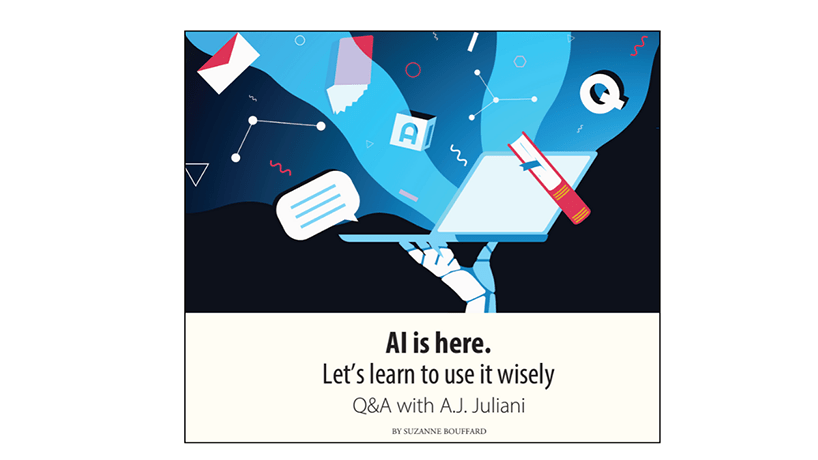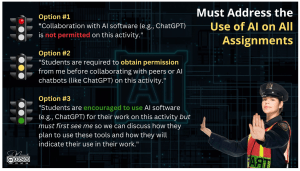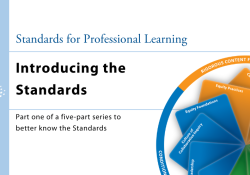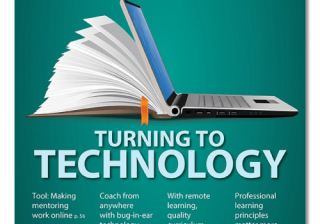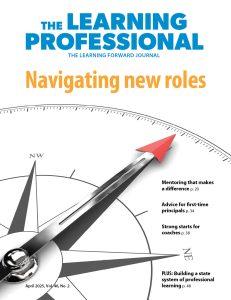How might students use AI to help them think? This was one of the questions discussed during a recent “Chat n Chew” online gathering hosted by the New Jersey Learning Forward affiliate.
Learning Forward affiliates are local chapters across the U.S., Canada, and India, founded and maintained by area professional learning leaders who are deeply committed to furthering excellence and equity in professional learning.
New Jersey’s affiliate meeting brought together members and guest educators to discuss and learn about AI implications in the classroom. This meeting was part of an ongoing virtual series on the latest in the field of educator learning.
An article in The Learning Professional, “AI is here. Let’s learn to use it wisely,” served as a focal point for the nearly 40 educators present. Attendees appreciated a surprise appearance by the expert featured in the article, A.J. Juliani, an author, educator, and keynote speaker at Learning Forward’s recent national conference.
Rosemary Seitel, a technology-savvy school administrator and Learning Forward New Jersey board member, hosted the resource-packed, interactive session, developed in collaboration with Bobbie Felip. Juliani and Seitel discussed how educators can take advantage of the AI opportunity and be proactive about practices and guidelines while we are early in its advent and use.
To start the conversation, Seitel posed some questions to Juliani. “How do you see the role of teaching in the evolving classroom?” she asked.
Juliani said, “When we think about teaching, I’m thinking about the ultimate goal, that we want to engage our students, empower our learners, and get in a place where they transfer the knowledge and skills to new and unique opportunities, like college, career, and so forth. We’re seeing a bigger shift to the teacher as a facilitator. You’ve probably heard the term ‘guide on the side’ but I like the term ‘guide on the ride,’ since teachers are there along the journey.”
What decisions am I making for my students that they can make for themselves? @ajjuliani reminds educators to maintain a mindset of empowerment, agency, and ownership with teaching tools like AI. Share on XHe then shared an example of a situation where teachers realized they needed to make that shift. “I was working with a school district in Pennsylvania and their teachers were finding that students were struggling with assessments and performance tasks. The reason was that a lot of their students were using ChatGPT and other AI tools to do their homework. Kids were struggling when they were back in school, which made a lot of sense.”
He saw a group of teachers adapt their instruction as a result. They “came together and said, ‘No longer can we just give kids problems on DeltaMath or anything like that. We need to shift our practice a little bit.’ Instead of kids doing 10 problems for homework, they did two or three (and explained their thinking) or they took out their phone and recorded their process.” He acknowledged that, “Obviously, the teacher couldn’t watch all of them, but they were able to pick and choose the ones to share with the class and have conversations about.”
Juliani said he is seeing an increase in AI tools that enable such process-oriented assignments, including one called Snorkl, in which students share their thinking and then get feedback from their teacher and the AI in real time. “What a difference it makes when kids use AI to do their work, get feedback, hear different kinds of steps, talk with their teacher as a partner in that process, and use AI for a purpose!” he said.
Seitel then asked Juliani about student agency and how teachers can use AI for personalized learning. Juliani responded by saying, “I always ask people: ‘What’s the best learning experience you’ve ever had in your entire life?’ and ‘What’s the best experience you’ve ever had as a teacher?’ No one I’ve ever encountered says, ‘That worksheet or the bolded passages of that textbook were just life-changing.’”
Describing the more memorable experiences people have shared with him, Juliani highlighted how those experiences involved individual agency, ownership, and engagement. He encouraged participants to cultivate those qualities in their teaching. Referencing the book Empower, which he cowrote with John Spencer, he said, “The question I always have to remind myself to ask is: ‘what decisions am I making for my students that they can make for themselves?’” With all teaching tools, including AI, he said, the teacher should maintain a mindset of empowerment, agency, and ownership.
Suzanne Bouffard, editor-in-chief of The Learning Professional, joined the conversation and asked Juliani how he sorts through all the technology tools in a constantly shifting landscape. Acknowledging that AI currently feels like “the Wild West,” he recommended following one of two paths. “Number one, whatever tools and apps your district is already using, so Microsoft, Apple, or Google, there are already fantastic AI tools built into that kind of space and ecosystem. Always start there because you’re familiar with them.
“Next, consider your purpose instead of starting with the cool, shiny tool. Think about these tools much like you would a tool belt. It’s probably easier to learn how to use a hammer first than it is to use a nail gun, so we’ve got to scaffold our way up through that process. That’s a big thing that happens with trial and error, talking with other educators and groups and learning from each other. That’s one of the really cool things about education and Learning Forward as an organization, is that we share. We’re giving out different types of insights from the people that are here.”
After Juliani departed for another meeting, the group continued learning with Seitel and Felip’s presentation on empowering educators for effective and responsible AI use in the classroom. Seitel’s longstanding interest in technology has led her to believe that all educators need to become tech specialists because teachers and students use it as a part of everyday learning.
The group discussed the AI scale for students, also known as the “traffic light framework,” which helps students and teachers understand the use cases for AI. Red means no AI is allowed, yellow means ask for permission, and green indicates open use. Educators who are proficient in using AI weave all three aspects of this framework into their assignments. Whatever tools are being used, students need to continue to do the thinking and stay at the center of their learning.
As Juliani said in his interview with The Learning Professional, “No one wants teachers to use AI to create all the lesson plans and kids using AI to do all the work. We need to keep the human, the social, the meaning (at the) center.”
To wrap up, Seitel prompted participating educators to apply some of this learning and consider how they would explain the traffic light framework to their colleagues. She reminded the educators that it’s important to allow themselves time to engage in learning and understand that things may not work out according to initial hopes or plans. Seitel pointed to Learning Forward’s learning team cycle to show how shifting thinking takes work and energy.
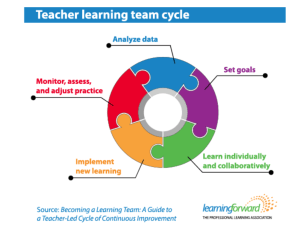
Adult learners need to give themselves enough time to take risks and learn from missteps. “This group is all about the learning, and we always have been. Now I think people really get it, that we can’t do this on our own and we’re all about the collaborative process of learning from one another,” Seitel said.
Learning Forward New Jersey’s mission is to build the capacity of educators to implement and support professional learning to equitably serve all students while fostering a culture of continuous improvement and collaboration. The affiliate offers a variety of activities throughout the year and invites other affiliate members to join them for their online offerings.
If you’d like to find the Learning Forward affiliate near you or learn how to start one, visit: https://learningforward.org/affiliates/.


